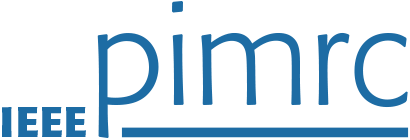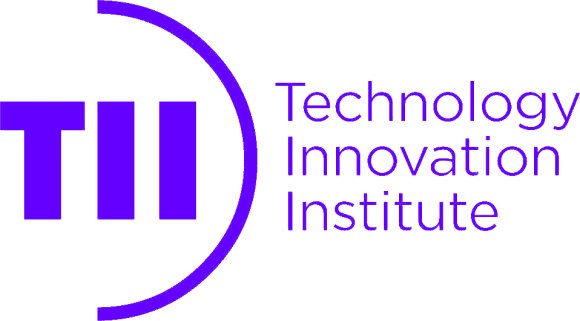List of Tutorials
T01: Reconfigurable Intelligent Surfaces for 6G and Beyond: Fundamentals, Applications, and Future Directions
T02 Distributed, Robust and Trustworthy Service Delivery in Edge-Assisted Green 6G
T03: What Will Wi-Fi 8 Be? A Primer on IEEE 802.11bn Ultra High Reliability
T04: Recent progress on channel measurement and modeling for 6G
T05: Open AI Cellular (OAIC): An Open‐Source AI‐Enhanced O‐RAN Platform Enabling 6G Wireless Research
T06: Holographic Radio: A New Paradigm for Ultra-Massive MIMO
The complete listing of Tutorials is as follows:
Day: Tuesday Morning – 05 September
Time: 09:00 – 12:30
Room: Dockside 4
T01: Reconfigurable Intelligent Surfaces for 6G and Beyond: Fundamentals, Applications, and Future Directions
Presenters: Aria Nosratinia and Bharath Shamasundar
Abstract: RIS is a relatively new and exciting technology that has the potential to revolutionize future wireless systems and is widely touted as a potential technology for 6G. As the demand for faster, more reliable, and energy-efficient wireless communication continues to grow, RIS offers a component solution for wireless networks. The present tutorial begins by providing the audience with a fundamental understanding of RIS, building a solid foundation to easily absorb new results in the literature. The tutorial then drills deeper into what is arguably the key challenge in the practical adoption of RIS, namely the acquisition of channel state information. Basic ideas on pilots, RIS training states, and CSI estimation will be introduced, which will be followed by an exposition of the effect of cost & accuracy of CSI acquisition on the spectral efficiency of RIS. The tutorial then presents RIS channel estimation in wideband systems, sparsity exploiting RIS channel estimation, methods for reducing RIS estimation overhead, and machine learning-based estimation methods. Some practical issues and related problems that need further study will be discussed, including accurate modeling and analysis of mutual coupling among passive elements; perfect absorption/reflection of electromagnetic energy at RIS; frequency dependence of RIS elements, and near-field issues. The tutorial will finally explore potential applications of RIS technology and their impact on current and future wireless networks.
Day: Tuesday Morning – 05 September
Time: 09:00 – 12:30
Room: Dockside 5
T02 Distributed, Robust and Trustworthy Service Delivery in Edge-Assisted Green 6G
Presenters: Virginia Pilloni and Marco Martalò
Abstract: In this tutorial, we will overview Edge-assisted 6G green heterogeneous network architectures as a potential solution for increased throughput and reduced latency in innovative applications. We will consider a general architecture in which either local or Fog/Edge/Cloud computation can be exploited across the Edge-to-Cloud continuum to achieve improvements in the energy efficiency of the ecosystem itself. Moreover, we will examine in depth a few crucial aspects in such a scenario, that lead to specific functions/modules to be implemented in the architecture. First, Location Based Services (LBS) are investigated as a component to enable (in an energy efficient manner) location-aware applications, by feeding (possibly accurate) positioning information obtained by means of simple, yet effective, low complexity algorithms. Second, context-aware and user-centric resource allocation and service offloading/assignment algorithms are illustrated to manage the energy-efficient integration of networks with different computation and communication capabilities. Finally, security modules are discussed to securely-by-design counter-act the presence of malicious users. The performance of these characteristics and modules is finally assessed in three relevant IoT-based use cases: (i) service allocation in cognitive scenarios, (ii) trustworthy range-based localization, and (iii) LBS integration in a realistic use case.
Day: Tuesday Morning – 05 September
Time: 09:00 – 12:30
Room: Dockside 6
T03: What Will Wi-Fi 8 Be? A Primer on IEEE 802.11bn Ultra High Reliability
Presenters: Lorenzo Galati-Giodano, Giovanni Geraci, Boris Bellatlta, Francesc Wilhemi
Abstract: What will Wi-Fi 8 be? Driven by the strict requirements of emerging applications, next-generation Wi-Fi is set to prioritize Ultra High Reliability (UHR) above all. In this tutorial, we explore the journey towards IEEE 802.11bn UHR, the amendment that will form the basis of Wi-Fi 8. After providing an overview of the nearly completed Wi-Fi 7 standard, we present new use cases calling for further Wi-Fi evolution. We also outline current standardization, certification, and spectrum allocation activities, sharing updates from the newly formed UHR Study Group. We then introduce the disruptive new features envisioned for Wi-Fi 8 and discuss the associated research challenges. To conclude, we will shed light on ongoing activities and opportunities associated with the integration and application of AI/ML techniques in Wi-Fi.
Day: Tuesday Afternoon – 05 September
Time: 14:00 – 17:30
Room: Dockside 4
T04: Recent progress on channel measurement and modeling for 6G
Presenters: Jianhua Zhang, Pan Tang, and Yuxiang Zhang
Abstract: In recent years, the research of sixth-generation wireless communication system (6G) has attracted worldwide attention. While channel research are fundemental to 6G research, system design and performance evaluation. With the emergence of new spectrums, new technologies, and new application scenarios for 6G, some challenges have been brought to channel research. This tutorial provides an overview of the recent advancements in channel measurement and modeling for 6G, focusing on four main aspects. Firstly, the channel measurement, propagation mechanism modeling, and channel modeling methods in THz bands are reviewed, compared with that in sub-6 GHz and millimeter wave bands. Secondly, we show the channel measurement activities of joint communication and sensing (JCAS), and introduce a stochastic novel JCAS channel model. Then, the spatial non-stationary near-field channel model of extreme large multiple input multiple output (MIMO) and the reconfigurable intelligent surface (RIS) assisted channel model are reviewed and discussed. Finally, the channel modeling and prediction methods based on artificial intelligence (AI) are introduced, which can balance the accuracy and complexity of channel modeling. In conclusion, this tutorial aims to provide guidance on accurately modeling 6G channels and give some insights for 6G techniques research.
Day: Tuesday Afternoon – 05 September
Time: 14:00 – 17:30
Room: Dockside 5
T05: Open AI Cellular (OAIC): An Open‐Source AI‐Enhanced O‐RAN Platform Enabling 6G Wireless Research
Presenters: Vuk Marojevic, Minglong Zhang, Bo Tang, and Vijay K. Shah
Abstract: Since first conceptualized and proposed, the Open Radio Access Network (O-RAN) has aimed for openness, intelligence and flexibility. To fulfill the objectives, various network components and interfaces will have been virtualized and disaggregated. Meanwhile, O-RAN based 6G networks will incorporate artificial intelligence (AI) into the deployment, operation, test and maintenance of the network. AI can optimize parameters in a large search space, figure out corresponding solutions for new situations, as well as interpolate while facing insufficient information. This tutorial will introduce an open-source software platform Open AI Cellular (OAIC), a community research infrastructure enabling 6G wireless research and experiments. OAIC enables prototyping and testing of next generation AI-based cellular radio access networks (RANs). We will introduce how to design and integrate AI-based RAN controllers, such as user/resource scheduling and network slicing. The tutorial will also highlight methodologies for developing open-source tools and services for AI-enabled O-RAN management and experimentation with software-defined radios (SDRs) along with an AI-enhanced RAN testing framework for 6G research. Attendees will obtain substantial knowledge of the O-RAN fundamentals, the emerging OAIC research platform and how to use them to facilitate their research.
Day: Tuesday Afternoon – 05 September
Time: 14:00 – 17:30
Room: Dockside 6
T06: Holographic Radio: A New Paradigm for Ultra-Massive MIMO
Presenters: Hongliang Zhang, Boya Di, Zhu Han, Lingyang Song
Abstract: Holographic radio, which integrates massive antenna elements into a compact space to achieve ultra-massive MIMO for high-resolution sensing and high-capacity communications, has been considered as a promising enabling technique for the forthcoming sixth generation (6G) networks. Widely-utilized phased arrays relying on costly components make the implementation of ultra-massive MIMO in practice become prohibitive from both cost and power consumption perspectives. In contrast, the recent developed reconfigurable holographic surfaces (RHSs) composing of densely packing subwavelength metamaterial elements provide a new method to solve the above issue without costly hardware components. By leveraging the holographic principle, the RHS serves as an ultra-thin and lightweight surface antenna integrated with the transceiver, thereby providing a promising alternative to phased arrays for realizing ultramassive MIMO. In this tutorial, we will first provide a basic introduction of RHSs. We then introduce the unique features of RHSs which enables both communication and sensing, in a comprehensive way. Related design, analysis, optimization, and signal processing techniques will be presented. Typical RHS-based applications for the wireless communications and radio-frequency sensing will be explored. Our implementation of RHSs as well as the developed prototypes of communication and sensing systems will also be reported. Several up-to-date challenges and potential research directions will be discussed as well.







